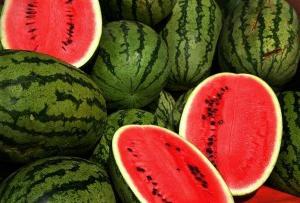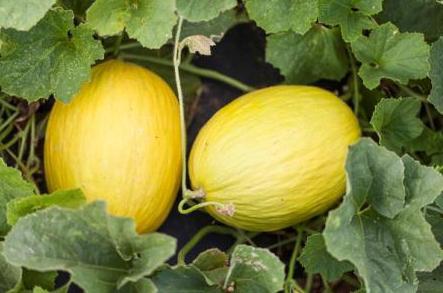How to grow melons and gourds
Melon crops are called annualplants belonging to the family of pumpkin. A distinctive feature of these are long stems with antennae. In the event that, next to these cultures will be put up pillars, the whips will begin to "climb" on them. In order to correctly apply the technology of cultivation, which will be set out below in the article, you need to know exactly which crops are melons.

The most suitable for sowing are considered to bemelons crops biennial seeds. If there is no possibility to obtain such a planting material, you can use one-year ones. However, in this case, they need to be heated to 60 degrees within 2 hours. In order for the shoots to be more amicable, the seeds of melons and gourds are also germinated. To do this, they are wrapped in cheesecloth and dipped in warm water for four hours. Then placed in a wet burlap and kept so for a day or two.
Melon crops for the most partprefer sunny places, warm weather and are resistant to a long absence of moisture. The thing is that the birthlands of all these cultures are the hot regions of the planet. Watermelons, for example, grow in the wild in South Africa, and melons and pumpkins - in Asia.

Plant seeds in the ground only whensummer weather will become stable, that is, in early June. In order to obtain a crop a little earlier, melons can be grown in seedlings. To do this, use peat cups, because these plants do not tolerate the transplant. In the ground melons are planted either in a nesting way or in rows. Each such plant requires a lot of space. First, they have long lashes, which need space for development, and secondly, large fruits, because of what they need a huge number of nutritional elements.
Melon crops are planted on 2-3 pieces. Melons and watermelons - at a depth of 4 cm, pumpkins - 6 cm. When the weather is warm, the shoots appear on the tenth day of sowing, and the first real leaf - a week later. Depending on the variety, the main shoot can begin to form after 15-40 days.

As for feeding, during the seasonmelons at early stages of development can be fertilized with infusion of mullein. In the autumn, when harvesting is collected, potash and phosphorus fertilizers are introduced for digging, and in the spring - in the preparation of beds - nitrogen. Although the plants of this family are characterized by drought resistance, they still give a higher yield during watering. For a season the soil under them is well humidified 9-12 times. However, during the ripening of the fruit, the plants should be watered as little as possible. Otherwise, the fruits will grow watery and not too sweet.
Cultivation of melons is enoughcomplex, because the climate in Russia is not very suitable for them. Often, even with proper harvesting, the gardener does not receive it. The result in many respects depends on the weather conditions. If you still want to grow watermelons or melons on your site, then it's worth trying to do it. If you are lucky, you can diversify your diet with tasty and unusually useful fruits.
</ p>




